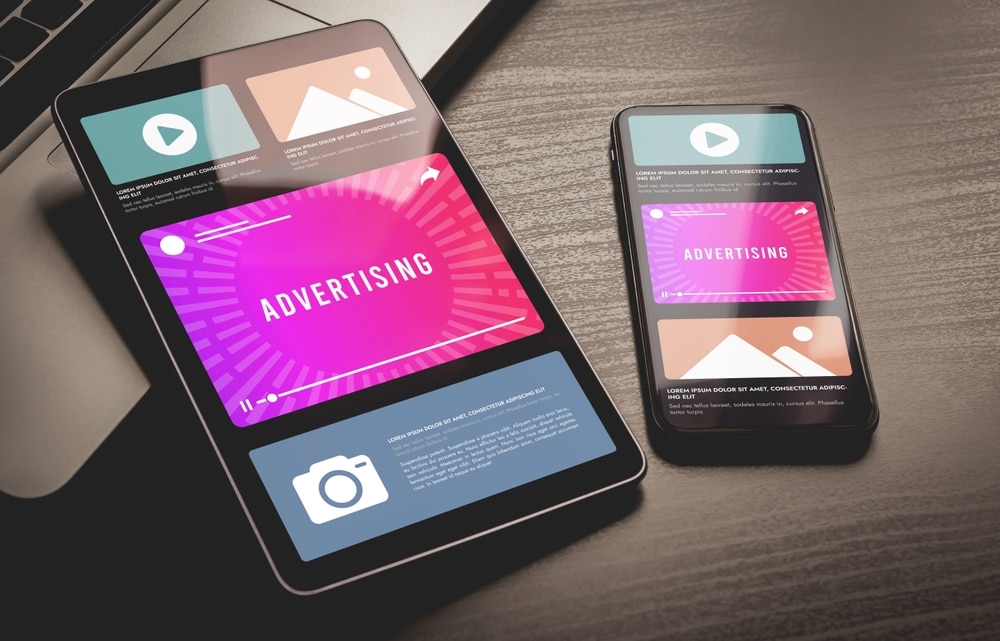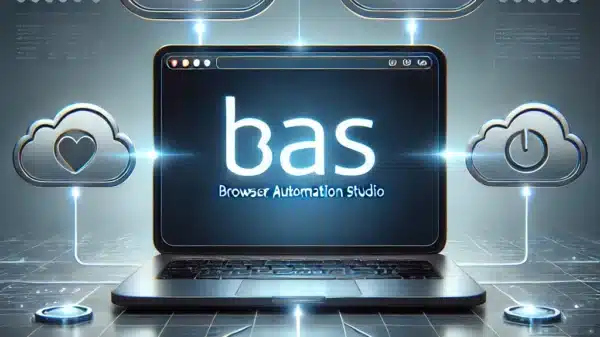Digital advertising has undergone significant advancements over the past decade, with one of the most notable being the use of programmatic insertion orders (Programmatic IO).
These Programmatic IOs have transformed the interaction between advertisers and publishers, making ad campaigns more efficient, transparent, and effective. Understanding Programmatic IOs is essential for anyone in digital advertising, as they represent the future of how ads will be bought and sold.
This article explores what a Programmatic IO is, its benefits, how it works, how it compares to traditional IOs, and future trends. Whether you’re an advertiser, publisher, or interested in digital marketing, this guide offers valuable insights.
Table of Contents
– What is a Programmatic Insertion Order (Programmatic IO)?
– Benefits of a Programmatic IO
– How Programmatic Insertion Orders Work
– Programmatic IOs vs. Traditional IOs
– Future Trends in Programmatic Insertion Orders
– Conclusion
What is a Programmatic Insertion Order (Programmatic IO)?
A Programmatic IO is a contract detailing the terms and specifics of an ad campaign, signed by both the advertiser and the publisher. Unlike traditional IOs, which require extensive manual handling, Programmatic IOs use automation to streamline the ad buying process. This not only saves time but also enhances the accuracy and effectiveness of ad placements.
Components of a Programmatic IO
A Programmatic IO outlines the specifics of an advertising campaign. This includes details such as the start and end dates, ad unit dimensions, target audience, pricing structure, and total cost of the campaign.
| Component | Details |
|---|---|
| Campaign Name | Summer Sale Promo |
| Start Date | August 1, 2024 |
| End Date | August 31, 2024 |
| Ad Unit | 300×250 Banner, 15-second Video Ad |
| Target Audience | Females, 18-35, Urban Areas |
| Impressions | 1,000,000 |
| Pricing | CPM – $5.00 |
| Total Cost | $5,000 |
Programmatic IOs are crucial in today’s fast-paced advertising environment. They ensure both advertisers and publishers are aligned on campaign goals and execution, reducing misunderstandings and increasing overall efficiency.
Benefits of a Programmatic IO
Programmatic Insertion Orders offer numerous advantages, making them an attractive choice for digital advertising campaigns. These benefits streamline the advertising process while enhancing the effectiveness and efficiency of ad placements.
- Automation: The primary benefit of Programmatic IOs is the automation of the ad buying process. This reduces the need for manual intervention, saving time and minimizing errors. Automated systems handle multiple tasks simultaneously, from targeting the right audience to adjusting bids in real time.
- Detailed Reporting: Programmatic IOs provide detailed and transparent reporting. Advertisers can access real-time data on their ads’ performance, including metrics such as impressions, clicks, and conversions. This transparency helps make informed decisions and optimize campaigns for better results.
- Customizable Ad Placements: Programmatic IOs offer greater flexibility in ad placements. Advertisers can easily adjust their campaigns to include different ad formats, sizes, and placements based on performance data and changing market conditions.
- Real-Time Adjustments: Programmatic IOs allow for real-time adjustments. Whether changing the target audience or modifying the budget, advertisers can tweak their campaigns on the fly to maximize effectiveness.
- Better ROI: By leveraging data and automation, Programmatic IOs help target the right audience more effectively, leading to higher engagement rates and better return on investment (ROI).
“We need to stop interrupting what people are interested in and be what people are interested in.” – Craig Davis.
This quote underscores the importance of delivering relevant and engaging content to users, a core strength of Programmatic IOs. By aligning advertising strategies with user interests, Programmatic IOs ensure ads resonate more with the audience, leading to better engagement and conversion rates.
How Programmatic Insertion Orders Work
Programmatic IOs streamline the entire process, from initial setup to real-time bidding and campaign optimization. Here’s a detailed look at how they function:
Step-by-Step Process
Initial Setup and Negotiation:
- Campaign Objectives: The advertiser defines the campaign goals, such as brand awareness, lead generation, or sales.
- Parameters: Both parties agree on the campaign parameters, including start and end dates, ad formats, targeting criteria, and budget.
- IO Creation: A Programmatic IO is created, outlining all agreed-upon details. This document serves as a formal contract between the advertiser and the publisher.
Execution and Real-Time Bidding:
- Demand-Side Platform (DSP): The advertiser uses a DSP to manage the campaign. The DSP facilitates real-time bidding (RTB) for ad placements.
- Ad Exchanges: DSPs connect with multiple ad exchanges, where publishers list their available ad inventory. Ad exchanges act as marketplaces for buying and selling ad space.
- Bidding Process: When a user visits a website, the ad exchange conducts an auction among advertisers. The DSP evaluates the bid requests based on the campaign parameters and submits bids in real-time.
- Winning Bid: The highest bid wins the auction, and the ad is instantly displayed to the user.
Monitoring and Optimization:
- Real-Time Analytics: Advertisers monitor the performance of their campaigns in real-time through the DSP dashboard. Metrics such as impressions, clicks, and conversions are continuously tracked.
- Dynamic Adjustments: Based on performance data, advertisers can make real-time adjustments to the campaign. This includes modifying bids, changing targeting criteria, and optimizing ad creatives.
- Reporting: Detailed reports provide insights into the campaign’s effectiveness, highlighting areas for improvement and successful strategies.
Programmatic IOs vs. Traditional IOs
Programmatic IOs leverage automation to streamline the ad buying process, handling real-time bidding and campaign adjustments with minimal manual intervention.
This contrasts with the slower, error-prone manual work required by Traditional IOs. Automation enables the rapid launch and real-time optimization of campaigns, allowing advertisers to respond quickly to market changes, unlike Traditional IOs that need time-consuming renegotiation for any adjustments. Programmatic IOs also offer a high degree of flexibility, allowing dynamic customization of ad placements and formats.
They provide detailed, transparent reporting for real-time performance tracking and decision-making. Additionally, Programmatic IOs deliver better ROI through precise audience targeting and reduced ad spend wastage, thanks to sophisticated algorithms and AI.
| Aspect | Programmatic IOs | Traditional IOs |
|---|---|---|
| Automation | Fully automated process | Manual handling required |
| Speed | Instant execution | Time-consuming setup and execution |
| Flexibility | High – real-time adjustments possible | Limited – changes require renegotiation |
| Transparency | Detailed, real-time reporting | Limited transparency, periodic reporting |
| Cost-Effectiveness | Better ROI through precise targeting | Potentially higher costs due to inefficiencies |
| Targeting Precision | Sophisticated algorithms and AI for precise targeting | Broad, less precise targeting |
| Human Involvement | Minimal, mainly oversight | High, manual coordination and adjustments |
Future Trends in Programmatic Insertion Orders
The future of Programmatic IOs is being shaped by emerging trends and technological advancements. As digital advertising continues to evolve, staying abreast of these trends is crucial for advertisers and publishers looking to maximize their campaigns’ effectiveness.
- Increasing Adoption Rates: The adoption of programmatic advertising is expected to continue growing, driven by the efficiency and effectiveness of Programmatic IOs. More advertisers and publishers are recognizing the benefits of automation and real-time bidding.
- Statistics: Global programmatic ad spending is projected to reach $687.85 billion by 2026, accounting for 87% of all digital display ad spending.
- Ad Formats: Video and Audio Programmatic: The rise of video and audio content consumption will lead to increased investment in programmatic video and audio ads. Programmatic IOs will enable advertisers to reach audiences across various streaming platforms and devices.
- Statistics: Video ad spending is expected to account for 50% of all programmatic ad spending by 2024, according to a report by Zenith Media.
Conclusion
By automating your ad buying process, you can save time, reduce errors, and focus on strategic decisions rather than manual tasks. Use the reporting from Programmatic IOs to continuously monitor and optimize your campaigns. The ability to make real-time adjustments based on performance data is invaluable. The flexibility of Programmatic IOs allows you to adapt quickly to market changes and audience behavior, helping you stay ahead of the competition.
By integrating Programmatic IOs into your advertising strategy, you position your business to achieve higher efficiency, better ROI, and a more dynamic approach to digital marketing. Start exploring programmatic solutions today and transform the way you connect with your audience.
If you’re ready to take your digital advertising to the next level, contact us today at Adcore. Learn more about how a Programmatic IO can benefit your business and help you achieve your advertising goals.












